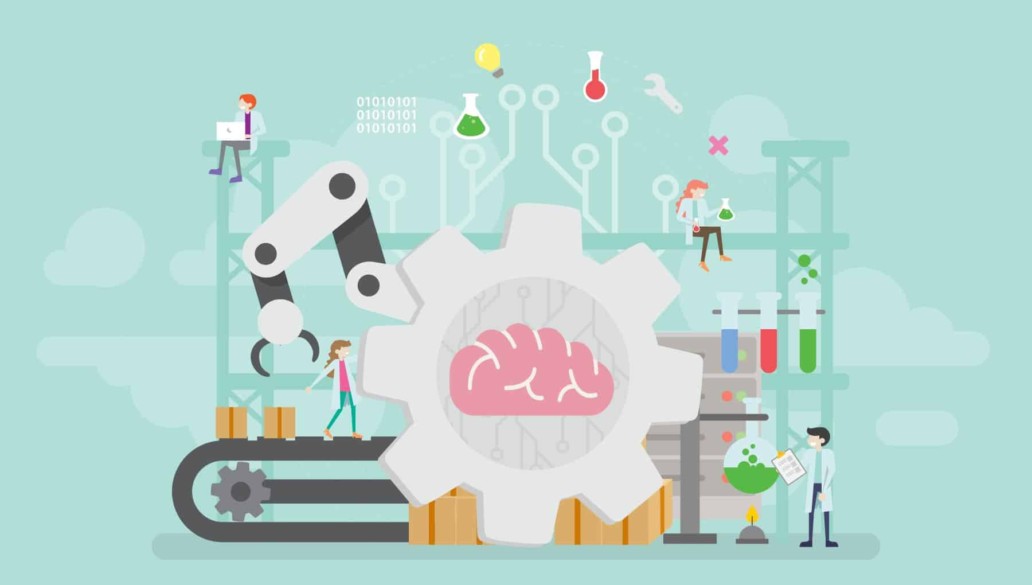Automation is nothing new to e-commerce. Whether its email automation, bid management tools, carrier management platforms or even Shopify Flow; automation has been around for some time.
But why is it important and where can email automation add the most value?
The rising cost of customer acquisition
Whether it’s social advertising, Google PPC, programmatic or pretty much any other paid channel, you will typically be buying your advertising (and therefore your customers) on an auction model.
Whilst this is nothing new, what is hotting up in this space, and will continue to do so, is the cost of acquiring that traffic. As with any auction model, the more people (brands) involved in the bidding process, the higher the price will become.
As growth in online traffic slows (due to the internet now having mass penetration) and the growth in the number of online brands accelerates; the basic economics of supply and demand means that the cost of a click in an auction model will only increase.
For brands that are still trying to operate paid media and looking for ROI on a per order basis, this is a big challenge and this will only become more difficult in the years to come. Perhaps it’s no surprise that Google is now encouraging retailers to look at the long term customer lifetime value (LTV) over short term order-level ROI.
The importance of increasing customer lifetime value
Looking at an order-level ROI is a short term mindset – especially if you’re trying to build a high-growth and sustainable business. Opting instead to evaluate customer lifetime value and longer-term success metrics will give you a more strategic and customer-centric view on your business and how to grow it.
So how, and why, do you focus on increasing the customer lifetime value?
The why is the easy bit. By focussing on the long term value of a customer, you start to evaluate your cost of acquisition against the true value of the customer, not just the value of their first order. This will give you a much clearer view of the success of your acquisition campaigns and a truer view of their long term returns.
Once you’re then focussed on the LTV, increasing the LTV of a customer is not just about offsetting increasing costs of acquisition but it will also allow you to spend more on each customer acquisition and therefore accelerate your growth.
Imagine a scenario where your ROI on a campaign is below 100% and you spend £35 in ads to capture a £70 order at 50% margin. The typical approach here is to decrease the amount you bid, to reduce your cost per acquisition and increase your ROI. What also typically follows here is a reduction in volume as you spend less, appear in the less prominent positions and focus on short term profitability.
Now imagine an alternative scenario where you’re focussed on the customer LTV, and you’ve spent some time building out automated email processes to increase it. Your first order is still £70 at 50% margin, but you know over the next 12 months that the average customer will order 3 more times and spend a total of £210 at 50% margin.
Knowing this, most businesses would be happy to spend more on acquiring that customer, safe in the knowledge that they have a much higher, longer-term value to the business.
With additional spend now being something you can justify, you can now focus on spending more on your ads and driving additional growth rather than backing out and focussing on short term profitability.
The problem with manual email marketing processes
The problem with manual processes is exactly that – they’re manual. Manual means it involves people time and that brings various challenges that undermine any effort to increase a customer’s LTV.
Manual email marketing processes:
- Require people, and people cost money
- Don’t happen if people are away from the business
- Are more difficult and less robust to optimise
- Get missed or forgotten
- Often disappear when people leave a business
Don’t get me wrong, manual processes can be highly effective, but if you’re focussed on building a business that is high-growth and scalable the word “manual” should be a big watch out.
Email automation moves tactics into a process
By moving to email automation you start to shift your focus from working on tactics (i.e. a manual email campaign every week) into repeatable and reliable processes (i.e. automated email workflows based on customer behaviour).
With this comes the ability to optimise the process rather than trying to deliver a better campaign the next time you send it.
Automated email processes:
- Happen when you’re not around
- Can be continually optimised and improved
- Become a business asset that has value
- Drive ongoing customer revenue growth
- Drive ongoing customer retention
Email marketing automation with Klaviyo
Whilst various email automation platforms exist, our preferred platform is Klaviyo due to its ease of integration with the major ecommerce platforms, in particular, Shopify.
By having an email marketing platform that integrates deeply with your ecommerce platform, and one that allows for automation, you’re able to create highly intelligent and automated customer communications based on how customers interact and buy from your store.
Taking Klaviyo as the example here, brands have access to all of their customer’s actions from their store within the email platform, including:
- Website browsing behaviour – including whether they’ve viewed specific products or added them to basket
- Purchasing behaviours – including orders and item-level data, and pricing
- Refund data
- Fulfilment data
- Predictive analytics – Klaviyo’s assessment of what the customer may be about to do (i.e. lapse, historic lifetime value, predicted lifetime value)
With such deep access to customer data, and the ability to automate communications to the customer around it, retailers have an amazing toolkit to drive the customer journey, repeat purchase and increase their customer lifetime value.
Example Klaviyo workflows
So how can you do this?
Here are the Top 5 Klaviyo workflows we see driving revenue across our customers at Venture Forge.
- Abandoned basket – emailing customers who build a basket and then don’t check out, is a great way of driving conversion rate. By building automation around this you can not only drive an increase in conversion but also then optimise this process to drive even more. Test how quickly you send an email, how many emails you send, what messages you use and how you communicate with new Vs. returning customers. Offering new customers free delivery is a great way of on-boarding them to your brand.
- Welcome series – The first emails you send to a customer once they’ve signed up for your newsletter are critical. Too often the customer receives nothing until the next manual campaign goes out, but this is a great opportunity to welcome a customer who has just expressed interest in your brand. Think about welcoming them to the brand, showing them why they should buy from you, share your best sellers and think about ways you can move them from being simply a subscriber to being someone who engages with your products and then buys from you.
- Upsell and cross-sell – lots of effort goes into cross-selling and up-selling on ecommerce sites but it is often a missed opportunity when it comes to email automation. If most customers buy products A and B together, can you create an email flow to respond to customers who only buy Product A? If positioned in the right way, this can be really helpful to customers and drive your basket value and lifetime value up.
- Timed repeat purchase – Do you have a product that is a consumable, or needs to be re-bought on a regular basis? If you know the average lifetime of that product email automation is a great way of prompting the customer for a repeat purchase and removing the chance of them buying from another brand.
- Free delivery to new customers – this works exceptionally well for brands looking to grow their customer base and can work in most workflows. By splitting out new customers within your workflows you can offer them additional perks/discounts to entice them to place their first order.
When you have confidence in your customer lifetime value, this is a great tactic for increasing new customer conversion rates and increasing the success of your acquisition campaigns.
How powerful can email marketing automation be?
The value of email marketing as a channel is powerful, but historically this has been driven by clever segmentation and manual campaigns.
With the power of email marketing automation through Klaviyo, our brand VeloSkin now generates 22% of its total revenue via automated workflows.
These are workflows that happen whether the team are in or not, workflows we can now optimise to drive further revenue growth and workflows we can depend on to uphold and grow our customers lifetime value with us.
The real power of these workflows is the confidence we now have investing in new customer acquisition – the real key to unlocking the growth of a brand.
Needing help growing your ecommerce business?
We are here to help. Whether it’s email marketing automation, Klaviyo expertise or a full strategic review we’d love to hear from you.

